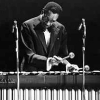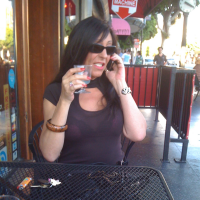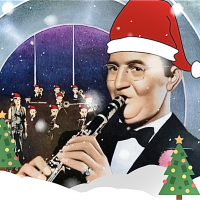Home » Jazz Musicians » Benny Carter
Benny Carter

Benny Carter's long career was consistently characterized by high musical achievement, and he developed a unique and readily identifiable style as both an alto saxophonist and an arranger. He was able to double on trumpet and was also proficient on clarinet, piano, and trombone. His saxophone playing was pure-toned, fluid, and flawlessly phrased. One of the trademark sounds of his arrangements was four saxophones harmonizing one of his swooping melodies as if they were one instrument improvising. He also created the big-band model of contending brass and reed sections, anticipated harmonic trends that would later appear in bebop, and transformed a clunky Western notion of musical time into something more buoyant and fresh.
Benjamin Lester Carter was born on August 8, 1907, in New York City and grew up in tManhattan (near Lincoln Center). He took piano lessons from his mother as a young boy, but his musical heroes were trumpeters like his cousin, Theodore Bennett, and Bubber Miley, who played with Duke Ellington. At 13, he bought a trumpet, but discouraged by how difficult it was to play, he traded it for a saxophone a week later. Through a great deal of practice on his own, and the occasional help of several saxophone teachers, Carter quickly grew into a fine player.
At age 15, the young Carter sat in with Harlem bands. From 1924 to 1928, Carter paid his dues as a sideman in a number of New York City jazz bands and by working for a short time for pianist Earl Hines in Philadelphia. At age 19, he received his first full-time job with Charlie Johnson's band. He entered the recording studio for the first time with Charlie Johnson's Orchestra in 1927, sessions that included two pieces arranged by Carter. He would later recall that he learned to arrange by spreading the blueprints of a composition on the floor and then writing the individual parts for the trumpet, saxophone, and other instruments. His new skill allowed him to join Fletcher Henderson's band in 1928, replacing Don Redman as the orchestra's arranger. “The charts that came out of Henderson's band are arguably the most influential of the big band era," noted All About Jazz.
In 1931 Carter joined McKinney's Cotton Pickers and, thanks to his growing reputation as an arranger, sold charts on the side to musicians such as Bennie Moten. He also taught himself to play trumpet during the early thirties, and was recording solos with the instrument after only two years. In 1932 Carter formed his first orchestra with a topnotch ensemble that included tenor saxophonist Chu Berry, pianist Teddy Wilson, drummer Sid Catlett, and trombonist Dicky Wells. Although he would start a number of other big bands during the thirties and forties, he never found the same level of success as Duke Ellington or Count Basie. More importantly, though, he won respect from fellow musicians.
Read moreTags
Birth of the Big Bands 1923 - 1936)

by Russell Perry
In the last hour, we listened to the pioneering jazz orchestra of Duke Ellington. Large jazz ensembles, such as Ellington's, soon to be known as “Big Bands," evolved through the 1920s with significant innovations led by bandleaders Fletcher Henderson, Benny Carter, Jimmie Lunceford and Don Redman, and arrangers Carter, Redman, Edgar Sampson and Sy Oliver. By the mid-1930s Big Bands dominated popular music. Playlist Host Intro 0:00 Fletcher Henderson and his Orchestra “Dicty Blues" from Study in Frustration ...
Continue ReadingBenny Carter: Symphony in Riffs

by Jerry D'Souza
Benny Carter Symphony in Riffs Rhapsody Films 2008
Benny Carter was a man of many parts. He played the trumpet and saxophone, he scored music for films and television, he was an educator, and he was an arranger in a class of his own. Carter was born in 1907, and in commemoration of his 100th birth anniversary, Rhapsody Films has re-released Symphony in Riffs. Though the original was released in 1989, the ...
Continue ReadingBenny Carter: Just Friends & The Benny Carter Centennial Project

by Andrew Velez
Mel Martin/Benny Carter Quintet Just Friends Jazzed Media 2007 Various Artists The Benny Carter Centennial Project Evening Star 2007
Recorded live at Yoshi's in Oakland in April 1994, Just Friends is a celebration of the longtime musical partnership of saxophonist/flutist Mel Martin and composer/alto sax legend Benny Carter. Timed to coincide ...
Continue ReadingBenny Carter: Sax ala Carter!

by Mitchell Seidel
This album represents just a small facet of Benny Carter's musical activity during the '50s and '60s, a good deal of which was occupied by writing and arranging in Hollywood. Nevertheless, Carter always seemed to be involved in a number of projects, this 1960 release being just one.
Accompanied by a first-rate trio of Jimmy Rowles (piano), Leroy Vinnegar (bass) and Mel Lewis (drums), the “King" tackled a collection of fairly familiar tunes on a then-United Artists album in 1960. ...
Continue ReadingBenny Carter: Jazz Giant

by David Rickert
“Jazz giant” is a term immediately greeted with skepticism, yet Benny Carter fills the role better than most. Perhaps the greatest of the big band leaders that most people have never heard of, Carter finally settled down in Hollywood in the fifties and began to record the full-length albums that eventually cemented his reputation. Jazz Giant is an excellent piece of work that serves as a relic from a bygone era when Kansas City swing was in its prime.
Continue ReadingBenny Carter (1907-2003)

by AAJ Staff
Submitted on behalf of Michael Anthony During 2003 we lost the last survivors of a hardy and influential generation. They were men and women who were born at the turn of the last century. They influenced the culture of the 20th Century. These tireless artists via the new mediums that were available to them (radio, motion pictures and television) changed how we laughed (Bob Hope), how we viewed women (Katharine Hepburn), how we heard music (Benny Carter) ...
Continue ReadingJazz Musician of the Day: Benny Carter

Source:
Michael Ricci
All About Jazz is celebrating Benny Carter's birthday today!
Benny Carter's long career was consistently characterized by high musical achievement, and he developed a unique and readily identifiable style as both an alto saxophonist and an arranger. He was able to double on trumpet and was also proficient on clarinet, piano, and trombone. His saxophone playing was pure-toned, fluid, and flawlessly phrased. One of the trademark sounds of his arrangements was four saxophones harmonizing one of his swooping melodies as ...
read more
Jazz Musician of the Day: Benny Carter

Source:
Michael Ricci
All About Jazz is celebrating Benny Carter's birthday today!
Benny Carter's long career was consistently characterized by high musical achievement, and he developed a unique and readily identifiable style as both an alto saxophonist and an arranger. He was able to double on trumpet and was also proficient on clarinet, piano, and trombone. His saxophone playing was pure-toned, fluid, and flawlessly phrased. One of the trademark sounds of his arrangements was four saxophones harmonizing one of his swooping melodies as ...
read more
Jazz Musician of the Day: Benny Carter

Source:
Michael Ricci
All About Jazz is celebrating Benny Carter's birthday today!
Benny Carter's long career was consistently characterized by high musical achievement, and he developed a unique and readily identifiable style as both an alto saxophonist and an arranger. He was able to double on trumpet and was also proficient on clarinet, piano, and trombone. His saxophone playing was pure-toned, fluid, and flawlessly phrased. One of the trademark sounds of his arrangements was four saxophones harmonizing one of his swooping melodies as ...
read more
Jazz Musician of the Day: Benny Carter

Source:
Michael Ricci
All About Jazz is celebrating Benny Carter's birthday today!
Benny Carter's long career was consistently characterized by high musical achievement, and he developed a unique and readily identifiable style as both an alto saxophonist and an arranger. He was able to double on trumpet and was also proficient on clarinet, piano, and trombone. His saxophone playing was pure-toned, fluid, and flawlessly phrased. One of the trademark sounds of his arrangements was four saxophones harmonizing one of his swooping melodies as ...
read more










































